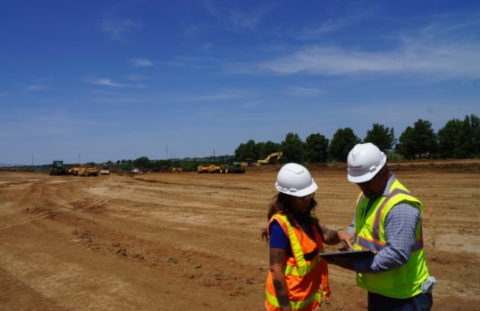Find an office location
More than 175 offices from coast to coast.

It is time for geotechnical engineers join the pace of technological change. If technology can tell our car when it is safe to change lanes, or even change lanes for us, perhaps we should start to think about how it can change how we go about geotechnical characterization.
Terracon is leading the way in changing the traditional approach to geotechnical engineering with the power of technology. There is a wealth of information about the subsurface geology, hydrogeology and geotechnical characteristics on the internet. Governmental agencies are sharing what they know about the subsurface. All it takes is the time to look and the discovery can be amazing. It doesn’t stop there. Geotechnical engineers are starting to understand the power of their big data. Terracon has more than two million soil boring logs in just about every geologic formation across the USA, and is capturing at least 100,000 more each year. We pull them out of long-term storage and put them into our geographic information system (GIS) retrieval platform. What used to take hours to find, now takes just seconds. All of this data, combined with the information that is shared by government agencies are powerful tools when we embark on a geotechnical characterization.
Noted economist and Nobel Laureate Professor, Robert J. Shiller, is quoted as saying “It amazes me how people are often more willing to act based on little or no data than to use data that is a challenge to assemble.” To avoid this challenge at Terracon, we are combining the power of computers, GIS-based archiving and retrieval systems and even machine learning to start our geotechnical site characterization process with predictive analysis techniques. These techniques incorporate what we already know, how consistent that information is and, bolstered by the opinion of our local, experienced geotechnical practitioners, what confidence we have in our predictions from the information available.
The day is coming when we will be able to implement machine learning technology to develop a virtual soil boring log for any given point within the United States. In the interim, geotechnical engineers must activate their data, implement a program of staying current in their use of public domain data, and predict what will be encountered at a project site, along with predicting confidence in that estimate. With such predictions, and with an understanding of technologies that can be used to supplement common soil borings, some intrusive in nature, others using geophysics and nonintrusive, the geotechnical engineer can develop a smart work plan. That smart plan will confirm (or modify) the predicted conditions and gather the information necessary to make that foundation design with higher confidence.
Geotechnical engineers have run with our SPT hammer long enough. It’s time to let technological innovation help us do our work better, quicker and with more confidence.

More than 175 offices from coast to coast.